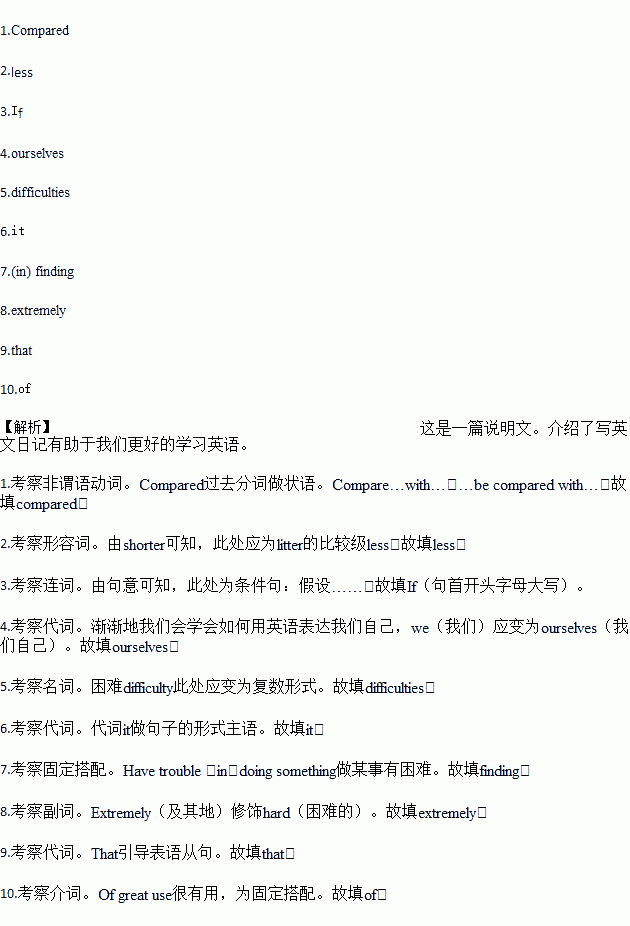题目内容
Keeping a diary in English is one of the effective ways to improve our English writing ability.
the effective ways to improve our English writing ability.
1. (compare) with other forms of writing, it is shorter and takes 2. (little) time. It can help us to develop the habit of thinking in English. 3. we persist in the practice, gradually we’ll learn how to express 4. (we) in English. When keeping a diary in English, we run up against many 5. (difficult). In the first place, 6. often happens that we have trouble 7. (find) appropriate words and phrases to give expression to our mind. Secondly, there are many idiomatic ways of saying things in Chinese. And it is 8. (extreme) hard for us to put them into English properly.
As far as I am concerned, my suggestion is 9. we should always have a notebook and a Chinese-English dictionary within easy reach. We can also turn to our English teacher for help, if necessary. In short, I believe that it is 10. great use to keep a diary in English for the development of our writing skills.


 eroes. Herbie is known to play well into the early hours, so don’t expect to get much sleep. This is Herbie’s third visit to Shanghai. The first two were sold out, so get your tickets quickly.
eroes. Herbie is known to play well into the early hours, so don’t expect to get much sleep. This is Herbie’s third visit to Shanghai. The first two were sold out, so get your tickets quickly. world that makes it so active in earthquakes?
world that makes it so active in earthquakes? finally, the earthquake hasn’t to be too deep.
finally, the earthquake hasn’t to be too deep.